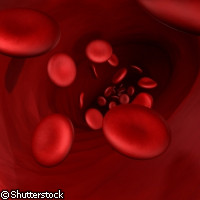Study reveals why blood vessels are tubular
Scientists have identified one of the molecules responsible for the tubular shape of blood vessels. The researchers believe their findings could have important implications for those attempting to build new organs from stem cells. The study, which was partly funded by the EU, was recently published in the journal Blood. Blood vessel development throughout life is regulated by VEGF (vascular endothelial growth factor) proteins. When these proteins bind to receptors on the surface of the cells, they effectively pass a message on to the cell, telling it what to do. In this study, an international team of scientists led by Lena Claesson-Welsh of Uppsala University in Sweden investigated the role VEGF plays in ensuring blood vessels grow into tubes, not layers. Their research revealed that certain variations of VEGF attract an 'instructor' protein. When this VEGF variant, with the 'instructor' protein attached, docks with a receptor on the surface of a cell, a signal is sent into the cell telling it to form a tube-like shape with its neighbours. When the instructor protein molecule is absent, the cells line up next to one another and form a sheet. The research findings could be of use to those trying to use stem cells to create replacement organs for donation. While the use of a patient's stem cells avoids the problem of organ rejection, creating coherent, three-dimensional structures from stem cells has proven difficult. 'Our contribution can make it possible to create blood vessels from stem cells and to direct them to form a tube instead of a layer,' explained Professor Claesson-Welsh. 'Perhaps this knowledge can be transferred to the formation of other tube-like structures in the body, such as the lung and intestines. The [prospects] for the future are very exciting.' EU support for the research came from the Lymphangiogenomics ('Genome-wide discovery and functional analysis of novel genes in lymphangiogenesis') project, which is financed under the 'Life sciences, genomics and biotechnology for health' Thematic area of the Sixth Framework Programme (FP6). The project, which brings together 13 partners from 8 countries, aims to uncover the regulatory factors behind blood vessel growth.



